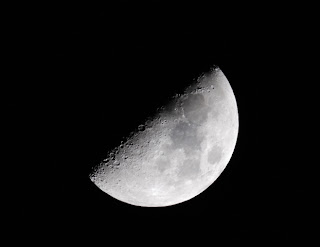
I begin this blog entry with Bible scripture concerning the birth of Jesus from the Gospel of Matthew.
++++++++++++++++++++++++++++++++++++++++++++++++++++++
Chapter 2
1. Now when Jesus was born in Bethlehem of Judea in the days of Herod the king, behold, wise men from the East came to Jerusalem, saying,
2. "Where is he who has been born king of the Jews? For we have seen his star in the East, and have come to worship him."
7 Then Herod summoned the wise men secretly and ascertained from them what time the star appeared;
8 and he sent them to Bethlehem, saying, "Go and search diligently for the child, and when you have found him bring me word, that I too may come and worship him."
9 When they had heard the king they went their way; and lo, the star which they had seen in the East went before them, till it came to rest over the place where the child was.
10 When they saw the star, they rejoiced exceedingly with great joy;
11 and going into the house they saw the child with Mary his mother, and they fell down and worshiped him. Then, opening their treasures, they offered him gifts, gold and frankincense and myrrh.
+++++++++++++++++++++++++++++++++++++++++++
The Star of Bethlehem announced the birth of Jesus Christ and then guided the wise men to find Him. The origin of Bethlehem's Star has long been the topic of discussion to scientists, astronomers, theologians and curious folks like us ever since the event occurred.
I watched a Science Channel special on the origin of the Bethlehem Star tonight and will share some of their conclusions.
First off, I must say that the show was very respectful to the birth of Jesus. Unlike the atheistic dribble that the National Geographic channel puts out in their religious programs, this show never casts doubt on the existence of Jesus or his birth. Thank you Science Channel for respecting our right to 'believe'. Anyhow, on to the origin of the Star of Bethlehem.
There are several theories regarding the origin of the Star that announced Jesus birth, so in no particular order here are the four most prominent:
Theory 1: A Comet
Some experts believe the Bethlehem Star to be a comet traveling through the solar system. Could be, but for certain it is not Halley's Comet or other 'known' ice balls. It could have been a comet that only passed through the solar system one time, and having fulfilled its purpose (announcing Jesus birth) may never be seen again.
Theory 2: An Alignment of Planets
Astronomers have calculated the placement of the planets for the past several thousand years. Some believe the Bethlehem Star to be a conjunction of Jupiter and Saturn that occurred near the time Jesus was born. An alignment of the two gas-giant planets would be spectacular, may be visible for several months and could catch the eye of Magi (wise men).
Theory 3: Dancing Moons & Planets
Another scientist believed it was Jupiter playing hide and seek with the Moon and going through a retrograde (backward) orbit where it would appear to stand still for several weeks. Naaaa! I didn't buy that one either.
Besides, if the wise men went from Persia (modern day Iran) to Bethlehem every time a planet did a dance in the sky, they would earn a lot of 'frequent camel miles'. The planets routinely perform retrograde orbits and play peek-a-boo with the Moon. Nothing noteworthy for announcing the birth of the Savior of all mankind.

The Star of Bethlehem had to be much more special to catch the eye of wise men from the East.
Theory 4: An Exploding Star (Nova)
One British scientist believes the Star of Bethlehem was a Nova. Hmmm! Now that is quite possible. Only one problem: "Which one of the quadruple billions of stars could it be ?
A strong candidate is Nova 60 1927 Aql. So where in the cosmos is this star, and why suspect it over all others ?
Nova 60 1927 Aql is a binary star (two stars locked in orbit around one another) located in the constellation Aquila. The star went nova (exploded) in 1927.

One reason stars in binary systems go Nova is because they syphon 'matter' off the other star in the binary (An example of a binary star system is pictured below). In these binary systems, a red or yellow star is locked in orbit with a white dwarf. The white dwarf gets has a veracious appetite and draws matter from the red or yellow star. When the white dwarf reaches critical mass (cannot hold any more matter) it explodes to shed the extra matter. Stars can go nova several times in their lives before going super-nova where they have one giant, final explosion.

Nova explosions can occur every 10, 100, 1000 or more years. When stars go nova, the visible light from the explosion can be seen for days, weeks or months before fizzling out.
The reason Nova 60 1927 Aql is a good candidate is because it is a known nova and it is located in a part of the sky that would be located in the Eastern sky about the time Jesus was born. It would also be located directly overhead when the wise men would have arrived in Bethlehem to worship the King of Kings.

One Final Theory:
Then again, the Star of Bethlehem could have been a special sign from God that science will never explain. Besides, the birth, life, death and resurrection of Jesus is a matter of faith and not of science.
Following is a picture of the Northern Cross I took in Spring 2008. This region of the sky includes the constellation Aquila. Nova 60 1927 would be located just left of center of the picture.

Merry Christmas
StarPilot
*












































